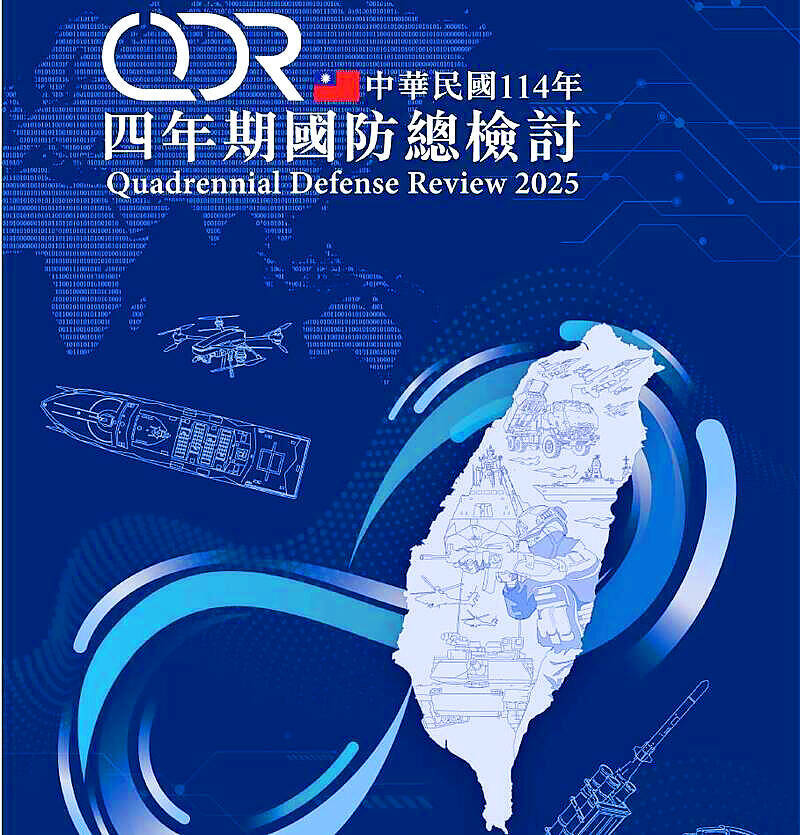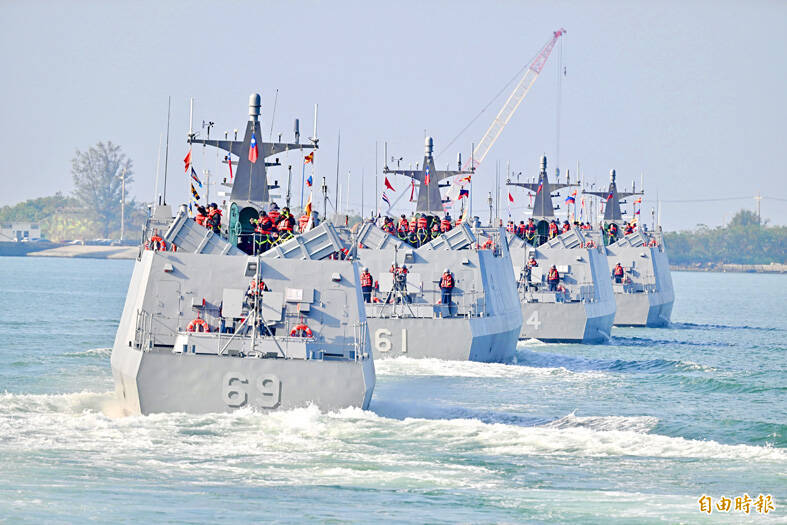《TAIPEI TIMES》 MND quadrennial review focuses on defense, deterrence

The cover of the Quadrennial Defense Review 2025 is pictured yesterday. Photo: Screen grab from the Ministry of National Defense’s Web site
STRATEGIZING:The quadrennial report includes a chapter on forming a regional link to bolster collective deterrence, such as through deeper military exchanges with the US
By Fang Wei-li, Lery Hiciano and Jake Chung / Staff reporter, with staff writers and CNA
The Ministry of National Defense yesterday delivered its Quadrennial Defense Review (QDR) to lawmakers, highlighting the nation’s defense strategy and elaborating on the role of US military cooperation.
Per Article 31 of the National Defense Act (國防法), the ministry must submit the QDR to the Legislative Yuan within 10 months of the presidential inauguration.
Like the 2021 QDR, the new quadrennial report focuses on building strong defenses and multilayered deterrence.
The strategy would take advantage of Taiwan’s terrain to bolster the military’s “adaptability, agility, lethality, cost-effectiveness and stealth,” the QDR said.
The nation would build combat capability across land, sea, air and cyberspace to deter aggression, the QDR said.
During wartime, the ministry would rapidly mobilize, enact multiple layers of defense and lean on military-civilian integration to delay enemy actions, weaken any invading forces and force a retreat, it said.
Future budget increases would focus on enhancing asymmetric capabilities and strengthening countermeasures to “gray zone” threats, the QDR said.
To raise the total defense budget to President William Lai’s (賴清德) target of more than 3 percent of GDP, the ministry would prioritize a special defense budget, it added.
The latest report included a separate chapter dedicated to “linking regionally to strengthen collective deterrence,” with the chapter’s first section dedicated to “deepening military exchanges between Taiwan and the US.”
The US is an important strategic partner, engages in close military exchanges and assists the nation in developing its self-defense capabilities, it said.
The ministry will continue to promote strategic cooperation with the US to maintain peace and stability in the Taiwan Strait, it added.
As for cooperation plans, the ministry would expand and deepen cooperation through strategic national security dialogues and visits, joint military exercises, defense industry cooperation and intelligence sharing, it said.
In other developments, the ministry yesterday confirmed that this year’s three-phase Han Kuang exercises began last month, with phases two and three to take place next month and in July.
According to a ministry report delivered to the legislature’s Foreign Affairs and National Defense Committee, this year’s drills would be focused on China’s “gray zone” tactics and the possibility of a Chinese invasion in 2027.
Military officers held a closed-door sandbox simulation last month, in which the joint chiefs of staff and other high-ranking military personnel reviewed this year’s joint combat plans, which have been amended based on changes made to counter information warfare, to include the whole-of-society defense resilience concept, and the issue of reservist forces, the report said.
The next session, which is to run from April 5 to 18, would use the Joint Theater Level Simulation systems to help commanders across all levels to test the validity of their plans and strategies, and how to work better with their own staff, it said.
The final results of the second stage are to be implemented in the live exercises from July 7 to 18, with all commanding officers encouraged to develop strategies that consider possible actions from enemy forces, it said.
The exercises, at different stages, expect to set the rules of engagement, implement decentralization of command, review weapon and equipment efficacy in combat situations, general logistics support, and how well the military and civilian sectors are integrated, it said.
The exercises hope to address strategies involving joint task force efforts to lock down enemy forces, implement defensive mine-laying, spread out munition supplies and logistics, test the efficacy of newly acquired weapons, and gauge how well civilian and military arms integrate with each other, the report said.
新聞來源:TAIPEI TIMES

Kuang Hua VI-class missile boats sail out of port on Jan. 19 during the Lunar New Year Combat Preparedness Exercise. Photo: Tu Chien-jung, Taipei Times
















